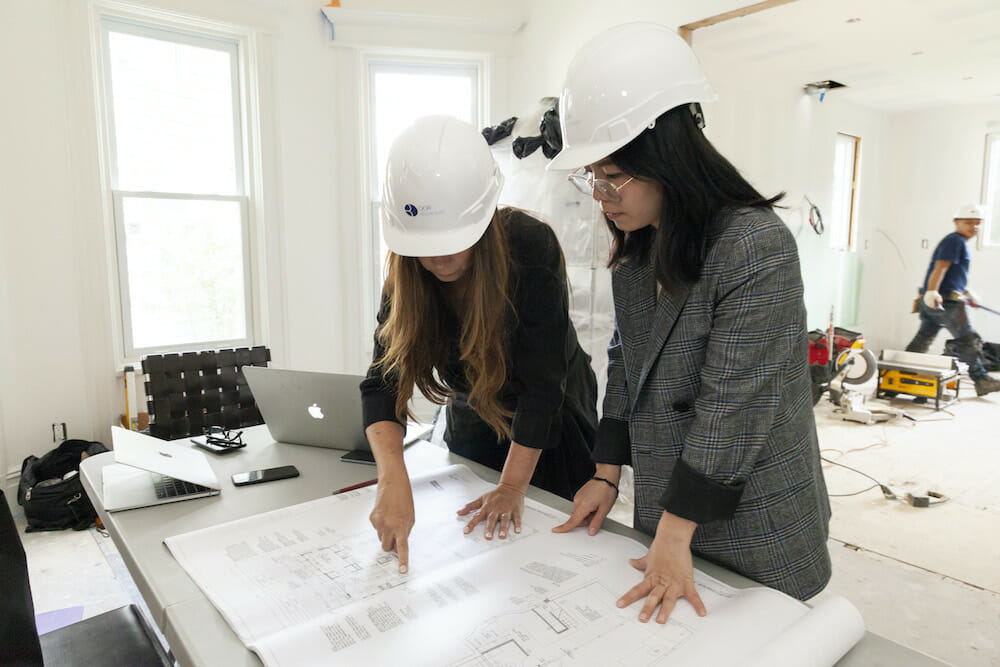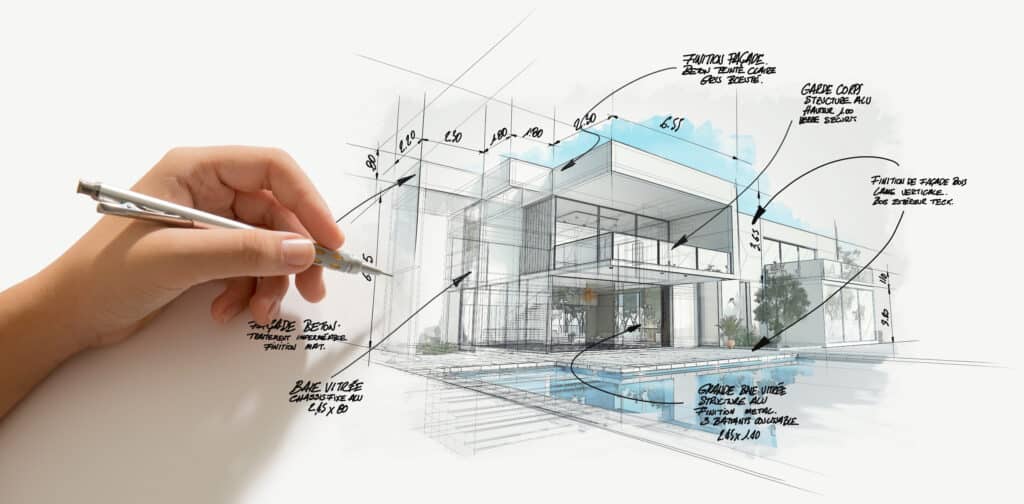Architect Workflow Improvement for Quicker Project Delivery
Architect Workflow Improvement for Quicker Project Delivery
Blog Article
Comprehending the Diverse Job Paths Available for Aspiring Architect
As an ambitious Architect, you have a world of profession courses awaiting you. Each path supplies distinct challenges and chances to apply your creative thinking and technological expertise. Whether you're attracted to conventional style or the subtleties of sustainable layout, there's a specific niche that straightens with your interests. Comprehending these varied alternatives can form your specialist journey, however which instructions will you pick to explore first?
Typical Architecture: Designing Frameworks and structures
Typical style concentrates on designing buildings and structures that mix performance with aesthetic appeal. Your layouts can mirror social heritage, showcasing regional traditions while meeting modern demands.
You'll create abilities in preparing, model-making, and website analysis, permitting you to envision and interact your ideas efficiently. Engaging with customers, you'll need to comprehend their vision and translate it right into practical styles.
Additionally, building codes and sustainability techniques are necessary in your job, guaranteeing your structures are eco pleasant and risk-free. As you grow in your job, you'll discover opportunities in residential, business, and even restoration tasks, each offering distinct challenges. Welcoming conventional architecture leads the way for a meeting profession that admires the past while shaping the future.
Urban Preparation: Forming Neighborhoods and Public Spaces
As an ambitious Architect, you can play an important duty as a metropolitan organizer, transforming just how communities connect and work. By using neighborhood involvement techniques, you'll assure that locals have a voice fit their environment. And also, incorporating sustainable style concepts will assist develop spaces that not just satisfy today's demands but also protect the future.
Role of Urban Planners
While lots of may think of architects as the single dreamers behind structures, metropolitan planners play an important role in forming the more comprehensive landscape of neighborhoods and public areas. By collaborating with various stakeholders, you'll aid create parks, transportation systems, and domestic areas that advertise social interaction and ease of access. Your experience in spatial layout and neighborhood characteristics enables you to picture future development while protecting cultural heritage.
Neighborhood Interaction Strategies
Reliable neighborhood engagement strategies are crucial for metropolitan planners to ensure that the voices of locals are listened to and valued in the planning procedure. To promote meaningful discussion, you ought to focus on open online forums and workshops where neighborhood members can express their concepts and problems. Use surveys and social networks to get to a more comprehensive audience, making sure varied point of views are included. Collaborating with neighborhood companies can boost count on and help with deeper links. It is necessary to provide clear details about decision-making procedures and suggested projects, enabling residents to feel enlightened and empowered. By actively incorporating and paying attention responses, you'll create areas that mirror the community's needs, eventually leading to more lasting and effective urban atmospheres. Welcome openness and continuous dialogue for enduring influence.
Sustainable Layout Concepts
When making metropolitan spaces, including lasting design concepts is vital for creating settings that prosper both ecologically and socially. Take into consideration integrating green spaces, like yards and parks, to improve biodiversity and boost air high quality.
Designing with water preservation in mind is also vital-- believe concerning rain yards and permeable surface areas to manage stormwater. Entailing neighborhood participants during the preparation process assurances that the rooms you produce fulfill their needs and urge social interaction. By accepting these concepts, you'll add to vivid, sustainable metropolitan landscapes that profit everybody.

Landscape Design: Creating Lasting Outside Environments
As you discover landscape design, you'll uncover essential layout concepts that produce lovely and functional outdoor rooms. Sustainable techniques play an essential role in making sure these environments grow while reducing ecological effect. And also, you'll find a selection of profession possibilities that allow you to make an actual difference in exactly how people connect with nature.
Style Concepts in Landscape
Comprehending layout principles in landscape architecture is vital for developing sustainable outdoor environments that harmonize with nature. You'll require to ponder elements like proportion, range, and equilibrium to guarantee your layouts feel natural and inviting. In addition, pay interest to seasonal adjustments, designing with products that match the surroundings year-round.
Lasting Practices Introduction
Lasting practices in landscape architecture not just focus on aesthetic appeals yet additionally focus on ecological wellness and source conservation. By incorporating native plants, you improve biodiversity and decrease the need for chemical fertilizers and pesticides. Applying efficient irrigation systems assists preserve water and reduces overflow, shielding nearby ecosystems. You can develop areas that advertise soil health, such as making use of natural materials and exercising permaculture concepts. Additionally, integrating green framework, like rainfall gardens and porous sidewalks, aids in stormwater monitoring and minimizes urban warm. You add to a much healthier world and give rooms that foster area connection when you develop outside environments with sustainability in mind. Inevitably, these methods ensure your designs benefit both people and the atmosphere for many years to come.
Profession Opportunities Exploration
With a strong foundation in lasting methods, landscape design uses a range of career courses that enable you to make a significant effect on the setting. Urban planners frequently collaborate with landscape architects to produce green spaces in metropolitan settings, improving city livability. If you're passionate about education, take into consideration becoming a landscape design teacher, motivating future generations.
Lasting Design: Concentrating On Eco-Friendly Practices
As you explore your profession in design, accepting environment-friendly practices can set you apart in an affordable area. Sustainable design concentrates on developing structures that decrease environmental effect while boosting owner health. By including eco-friendly products, energy-efficient systems, and sustainable structure strategies, you'll add to a greener future.
Start by obtaining understanding of green qualifications like LEED or BREEAM, which can reinforce your credentials. Consider exactly how natural light, ventilation, and thermal efficiency can optimize style. Team up with engineers and ecological specialists to introduce options that minimize waste and preserve sources.
Don't neglect the significance of area involvement-- interesting regional stakeholders can influence designs that integrate with the environment. As clients increasingly focus on sustainability, your knowledge in environmentally friendly methods will certainly not only bring in projects yet also meet your interest for responsible design. Welcome this critical element of the profession, and watch your career flourish.
Historic Conservation: Securing and Recovering Cultural Heritage
While you commence on your architectural trip, take into consideration the important function of historical preservation in preserving our social heritage. This field focuses on the protection and reconstruction of substantial buildings, sites, and frameworks that inform the stories of our past. By participating in historic preservation, you'll help safeguard the building tradition that forms neighborhood identity.
As a historic preservation Architect, you'll analyze historical importance and evaluate the problem of frameworks. You'll work very closely with conservationists and historians to guarantee authentic repair techniques are used. This career course enables you to blend creativity with research study, allowing you to design services that value initial materials and workmanship.
Your work not only adds to sustainability by reusing existing structures however also cultivates a feeling of satisfaction within neighborhoods. Embracing this course will certainly aid you come to be a guardian of history, protecting the stories and aesthetics that enhance our lives.
Inside Design: Enhancing Indoor Spaces
Historic conservation and indoor architecture both share a commitment to enhancing the built atmosphere, but they concentrate on various facets. While historic preservation stresses preserving a structure's social and historic value, indoor architecture absolutely nos in on optimizing interior rooms for capability and visual appeals.
As a hopeful Architect, you'll locate that indoor style permits you to blend creative thinking with technical abilities. You'll develop rooms that not just look good however additionally advertise comfort and performance. This field involves understanding exactly how light, color, and products connect within a space, influencing mood and use.
You'll service various tasks, from household homes to business offices, guaranteeing that each atmosphere fulfills the demands of its owners. By focusing on user experience, you can change interiors into practical and motivating spaces, making a substantial impact on how individuals communicate with their environments. Welcome the chance to enhance indoor settings and shape the method individuals live and work.
Industrial Style: Merging Performance With Aesthetics
Commercial style plays an important duty in creating items that flawlessly mix aesthetic appeals with functionality, making certain that what you utilize daily is not just aesthetically appealing however also useful. As a hopeful Architect, you might engage on your own in this link this field, concentrating on making everything from furniture to consumer electronic devices. Your job includes recognizing user needs, materials, and producing procedures, enabling you to develop innovative solutions that improve day-to-day experiences.
In commercial layout, you'll typically work together with designers, suppliers, and marketing experts, making sure that your designs are not only lovely however also practical. You'll find out to balance form and feature, focusing on use without giving up design. By honing your abilities in sketching, 3D modeling, and prototyping, you'll be well-equipped to bring your ideas to life. This profession path uses a dynamic setting where imagination fulfills usefulness, making it a gratifying option for architects curious about forming the products of tomorrow.
Often Asked Questions
What Educational Qualifications Do I Need to Come To Be an Architect?
To end up being an architect, you'll require a specialist level in style, typically a Bachelor's or Master's. Additionally, you'll need to complete a teaching fellowship and pass the Architect Enrollment Assessment to exercise lawfully.
Exist Certification Demands for Different Architectural Occupation Paths?
Yes, there're certification needs for numerous architectural paths. Architect. You'll need to pass exams, total teaching fellowships, and in some cases go after specialized training, depending upon your selected emphasis, like landscape style, city design, or historic conservation
What Software Application Skills Are Necessary for Designers Today?

Just How Can I Gain Practical Experience While Researching Architecture?
You can gain sensible experience by interning at architectural firms, taking part in design competitions, offering for neighborhood jobs, or collaborating with schoolmates on real-world projects. These possibilities improve your skills and develop beneficial connections in the sector.
What Job Opportunities Exist Outdoors Conventional Style Firms?
You can explore different job chances outside typical style companies, like city preparation, indoor design, landscape architecture, construction management, realty advancement, or perhaps roles in sustainability consulting. Each offers one-of-a-kind obstacles and rewards.
Whether you're drawn to traditional style or the subtleties of lasting design, there's a specific niche that lines up with your interests.When making metropolitan spaces, including sustainable layout principles is important for developing settings that flourish both ecologically and socially.As you explore landscape design, you'll uncover vital style concepts that produce lovely browse around this site and practical outdoor rooms.Recognizing design concepts in landscape style is crucial for creating sustainable outdoor settings that harmonize with nature.In commercial design, you'll frequently collaborate with suppliers, marketing professionals, and engineers, guaranteeing that your layouts are check that not just gorgeous but likewise possible.
Report this page